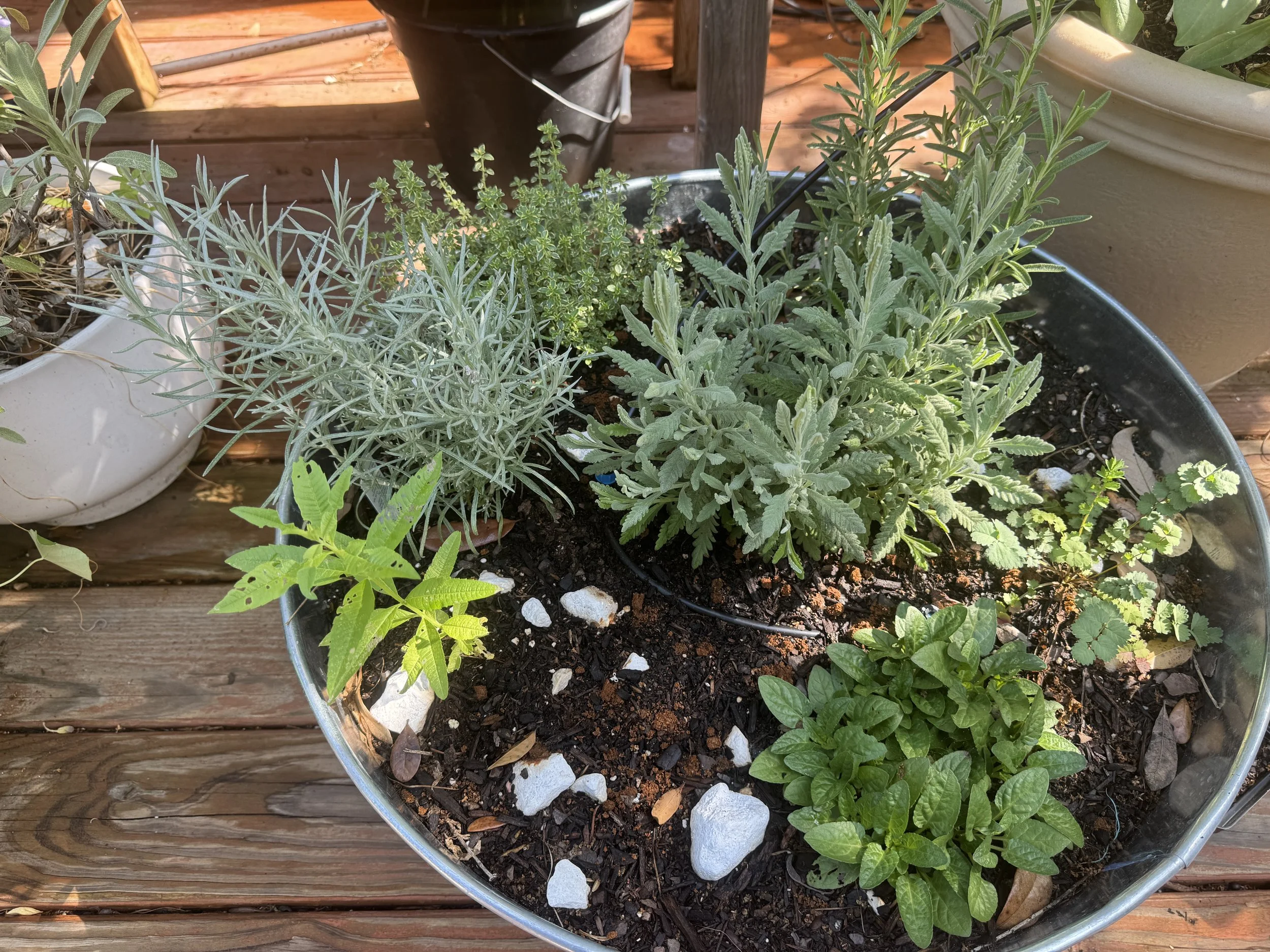Part 1: Setting Up Your Wellness Garden
Setup, timing, and habits. These are the 3 elements to gardening success. Soil, sunlight, and drainage can vary so much here in Houston, this article will focus on adding healing herbs to raised beds or to containers. You can of course plant directly into soil by borrowing some of the principles discussed here. So let’s dive in!
Set Up
I love herbs because they can grow almost anywhere. You can easily grow them in a pot, in the corner of a raised bed, or, if you’re brave, directly into the soil. However, that does not mean they all like the same things. In order to grow a wide range of herbs, I have created two different set-ups that can allow you to successfully a bunch of different herbs.
Dry Herb Set Up
Dry herbs like rosemary, lavender, lemon verbena, self heal, and curry plant are all sun-lovers and potentially large perennials. When setting up containers, I choose a clay or metal container that are durable and can handle the heat. These containers must have holes at the bottom, and I usually drill several if I’m using a metal container. Place them in a spot that gets at least 8 hours of sunlight a day. When planting in raised beds, I give these plants corner spots as way to secure their sun exposure.
Dry herbs are very easy to overwater and need lots of drainage. When creating their set up, the goal is to create as much drainage as possible and to keep the leaves dry. I use a 1/3 topsoil, 1/3 compost, and 1/3 sand mix or a good raised bed mix. Then I add my secret ingredient: rocks! Mixing rocks a couple handfuls of rocks into the soil increases drainage, while placing some more on the surface around the plant keeps roots cool and leaves dry.
Wet Herb Set Up
Wet herbs, like coriander, parsley, basil, chives, St. John’s wort, lemon balm, and mint don’t mind part shade and can get by on as little as 4 hours of sun each day (though they get bigger when they get at least 6). As they are annuals, I plant these in plastic containers at the bottom and all over my raised beds (except for mint or lemon balm, which must be in its own container). Unlike dry herbs, these plants get unhappy if their roots are allowed to dry out between waterings. The 1/3 topsoil, 1/3 compost, and 1/3 sand mix will work fine here or a potting soil with a good amount of compost.
Most of the healing flowers like chamomile, hyssop, bee balm, and calendula, behave more like wet herbs but with a 6 hour+ light requirement. Again, I put these in every free spot in my raised bed.
Timing
You can grow herbs any time, but there are optimum times to plant the ones you want. The fall is a great time because it still has a bit of hot season in August, warm season in September and transitions to cool season by late October November. That means that you can plant just about everything in a 4 month timespan. Need dates? Download my free seasonal planting calendar for Houston Gardeners.
Habits
Remember when I told you that there area wet and dry herbs? Here’s the thing, you have to water both regularly. Now, I can already hear you shouting “BETRAYL” as you remind me that I called rosemary a dry herb. Hear me out. Rosemary is a dry herb because it likes to dry out in between waterings. You still need to water 2-3x per week (depending on how hot it is outside) but you have to provide drainage. That is why set up is so much more important that simply watering your plants every day.
Here’s another hard truth. Consistency in watering is more important than the amount. Skipping a week is harder to recover from that watering too little each time. When you water consistently too little, your plants expand their roots and will adjust their growth to that watering accordingly. Skip a week and they can’t get respite even if they urgently expand their roots.
“But what about overwatering?!” you demand. Well, if you have good drainage and a way for the water to escape, you physically cannot overwater your plants. Again, set up is EVERYTHING.
Ready to plant? Check out our quick guide for a short list of what to grow in your wellness garden.


